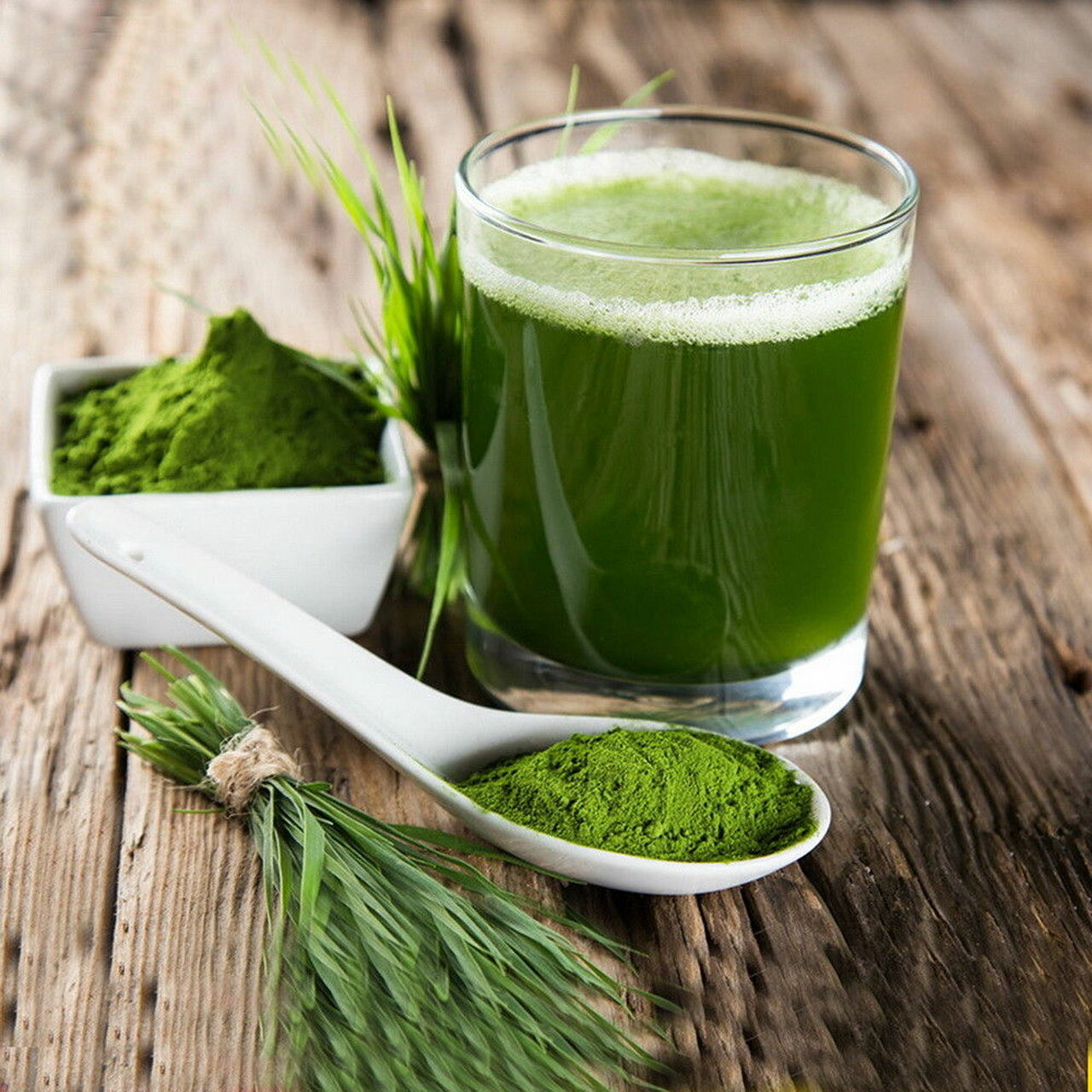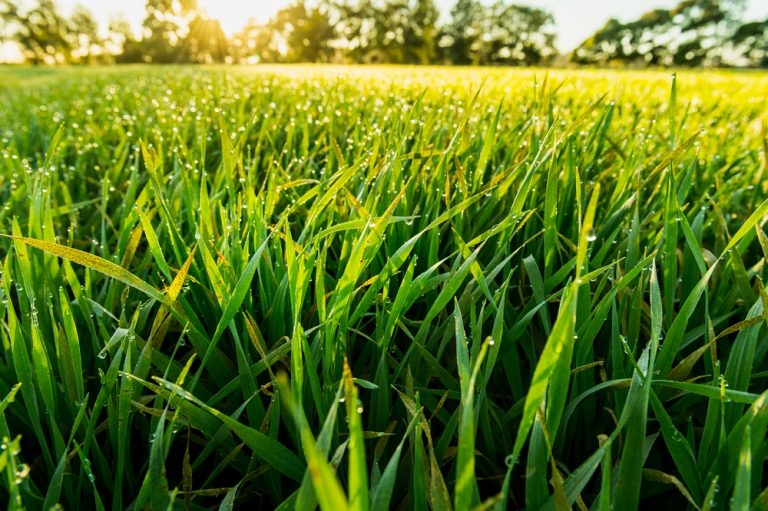Admittedly, the term superfood is a bit overused in the media. But if ONE plant deserves this label, it’s barley grass. The inconspicuous green stalks of barley are so densely packed with minerals, vitamins and other phytochemicals that they are incredibly valuable in your kitchen. Strictly speaking, barley grass is not a herb, but a sweet grass, like wheat and rye, whose grasses are also edible. However, because the young green is so brimming with healthy ingredients and easy to grow, it didn’t take long for my harvesting team members to try it at home. With the result: Fresh barley grass should not be missing on any windowsill and definitely deserves a free spot on our herb page and in your herb bed from early summer
Three good reasons to grow barley grass yourself

- Barley grass contains three important B vitamins that are particularly beneficial for vegetarians and vegans – fresh barley grass also contains a large proportion of fiber
- Planting barley grass is child’s play and can also be done indoors, on balcony boxes and tubs
- You save a lot of money by dressing yourself because you don’t have to buy overpriced instant products
Location & soil
As diverse as the ingredients are, it is all the more surprising that barley grass is so easy to grow. It is content with any quality of loose, weed-free soil. This is also because you are harvesting the weed young, before it has matured and formed kernels. Indoors you can also grow it on substrate or in a germinator. Like most plants, barley likes a spot in the sun, but also germinates in partial shade and even tolerates shady locations. However, the nutrient density is highest in the sun.
Indoors, you can grow barley grass anywhere there is space. Barley greens flat bowls, growing containers, casserole dishes, baking trays, window boxes, cookie jars, drawers…drawers? Well, everything has limits…
Sowing & Planting
Springs overnight for a fresh lawn of barley
For sowing in the garden, let the barley grass seeds soak in a bowl covered with a little water overnight, as it will germinate faster and you can harvest earlier. In the end, a nice dense barley lawn should grow, so don’t be afraid to scatter the swollen grains densely. It’s just that they shouldn’t lie on top of each other. Barley is a light germinator and should only be sprinkled with a little soil to weigh it down.
Grow fresh instead of buying processed
The green, which is rich in vital substances, is usually commercially available as barley grass powder or in tablet form. Then, of course, it is industrially processed in several steps, loses nutrients and is unnecessarily expensive. With a little space on the windowsill or in your mein ernte bed of choice, you always have your barley grass fresh and of organic quality at hand. Incidentally, when harvested juicy, it still contains dietary fibers that are missing in the processed form.
Sowing: On the windowsill or outdoors, it needs room temperature
Sowing depth: light germinator – put the seed directly on the soil and only sprinkle with a little bit of soil
Plant out in the bed: From mid-May, always frost-free
Row spacing: 20x20cm
Germination period: a few days
Duration of cultivation/ripe for harvest: 5-10 days after sowing
Care
Who is consumed quickly, needs little care
As quickly as it is grown, barley grass requires as little care – in fact, as good as none at all. Barley grass needs to be watered carefully, especially in closed containers, make sure that you don’t overwater and waterlogging forms.
If you plant it in your my harvest bed of choice, make sure that the bed is meticulously weed-free before sowing. This way you can be sure that only barley grass ends up on your plate.
Diseases and pests
Barley can contract a number of diseases including some powdery mildews and specific cereal diseases. But because you harvest the grass so early, it is usually not affected by diseases and pests.
Harvest & Storage
About 5-7 days (if you haven’t soaked it, it will take a little longer) after the first sprouts have appeared, your barley grass will be ready to harvest. You harvest it so early because the nutrient and vitamin content is at its highest at this time. The harvest is easy peasy. You can cut it off just above the ground with scissors or with a sharp knife as needed. You can use the weed fresh immediately or store it in small bundles between damp towels in the fridge.
Make your own barley grass powder
Enjoying barley grass fresh is definitely the healthiest way, but if you pay attention to a few things, you can also dry it in the oven at home and give it away to friends or take it with you when you travel. To do this, spread the grass out on the baking sheet and set the oven to no higher than 40 degrees. Pay close attention to this, because some of the vitamins in barley grass are not heat-resistant. Slightly open the oven door to allow moisture to escape. You can now process the dry barley grass or grind it into powder. UV light can destroy valuable ingredients – it is best to use dark glasses for storage or cover screw-top jars with paper.
Nutrients & Effect
Barley has been cultivated and used by humans for more than 6000 years. We use the grain to bake bread and brew beer, the pearl barley goes into hearty soups and stews, and the sprouts go into crunchy salads. The healing power of barley grass has been known since ancient times. The famous physician of ancient Greece Hippocrates crushed it and gave it to his patients to strengthen them. Barley grass water was recommended by Hildegard von Bingen to patients suffering from respiratory diseases and asthma.
More calcium than cow’s milk

In recent years, barley has experienced a renaissance as a medicinal plant. In the 1960s, Japanese scientists confirmed the high content of a complex combination of vital substances in barley grass. Barley grass scores with more vitamin B11 and calcium than cow’s milk, with more vitamin C than lemons, a high content of iron and amino acids, fiber, trace elements and folic acid, as well as a large portion of zinc. In addition, barley grass has a high bioavailability, which means that the nutrients in the young plant can also be reliably absorbed by the body – ideal for a strong immune system.
In the later stages of development, the plant then invests more in the development of flowers and grains. As a result, the chlorophyll, protein and vitamin content also decreases significantly. Incidentally, chlorophyll is similar to our red blood cells and can therefore have a beneficial effect on blood formation.
Competition for every vitamin pill – that’s in it:
vitamin C
B vitamins including B12
iron
zinc
calcium
folic acid
amino acids
fiber
chlorophyll

